#Masolino
Explore tagged Tumblr posts
Text
Cappella Brancacci: il punto della situazione sul restauro
Inizia nella Cappella Brancacci la seconda fase del restauro. Proseguono le operazioni di monitoraggio, studio e restauro conservativo nella preziosa cappella affrescata da Masolino, Masaccio e Lippi della chiesa del Carmine, facente parte dei Musei Civici fiorentini e di proprietà del Fondo Edifici di Culto del Ministero dell’Interno. Nel cantiere aperto al pubblico quattro giorni a settimana,…

View On WordPress
#artblogger#arte#bellezza#english#Lippi#madeinitaly#masaccio#masolino#Michelangelo Buonarroti#restauro#restoration#rinascimento#scultura
0 notes
Text

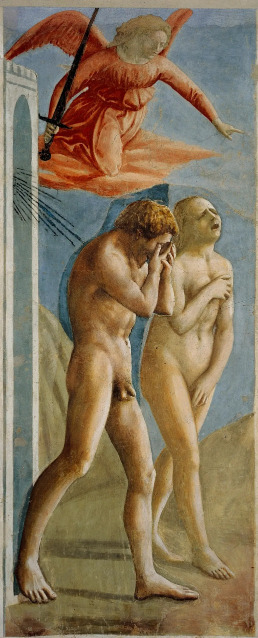
Details of Adam and Eve in the Brancacci's Chapel, Masolino da Panicale (left) and Masaccio (right), 1424-25
#cappella brancacci#santa maria del carmine#15th century#adam#eve#adam and eve#bible#masolino da panicale#masaccio#art history#art#italian art#aesthethic#frescoes#rinascimento#florence#good omes#angel#snake
48 notes
·
View notes
Photo
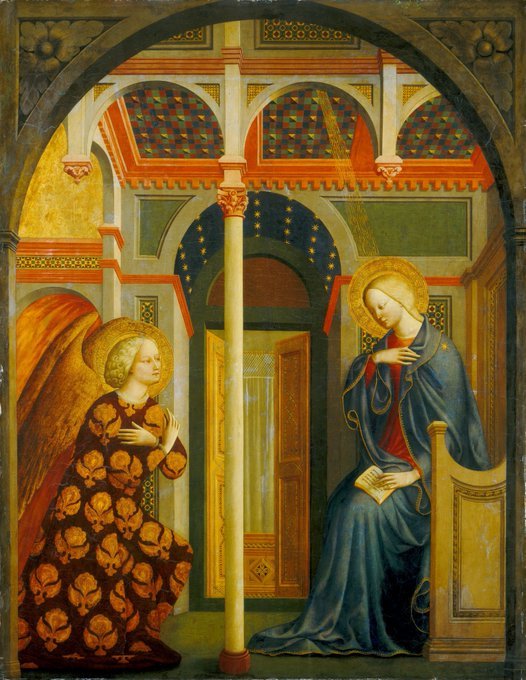
Masolino da Panicale: A Anunciación (1423-24)
9 notes
·
View notes
Text

Masolino da Panicale (1383-1435). The Annunciation. 1423/1424. Tempera (and possibly oil glazes) on panel.
#Masolino da Panicale#the annunciation#or mary getting interrupted while reading#painting#tempura on panel#oil on panel#(maybe)#love the halos in this one
1 note
·
View note
Text

Masolino da Panicale The Archangel Gabriel, c. 1430
15 notes
·
View notes
Photo

Masolino da Panicale, 1383-1447
[Eva] The Temptation, ca.1426/27, fresco, 208x88 cm
Cappella Brancacci, Santa Maria del Carmine, Florence
49 notes
·
View notes
Text
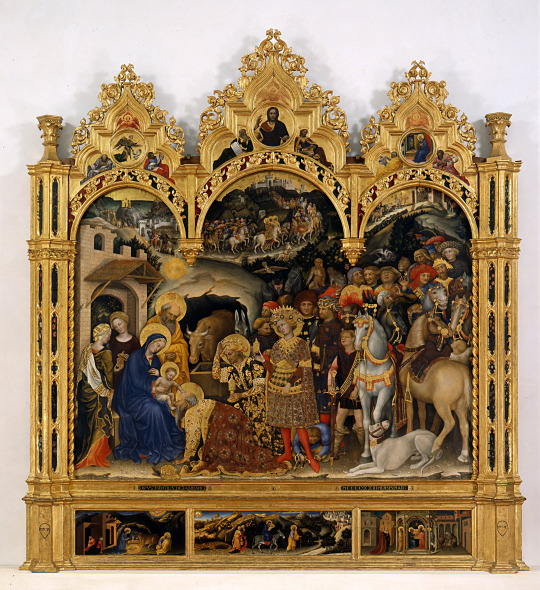
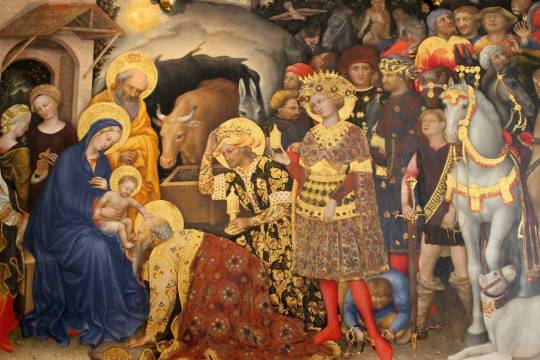
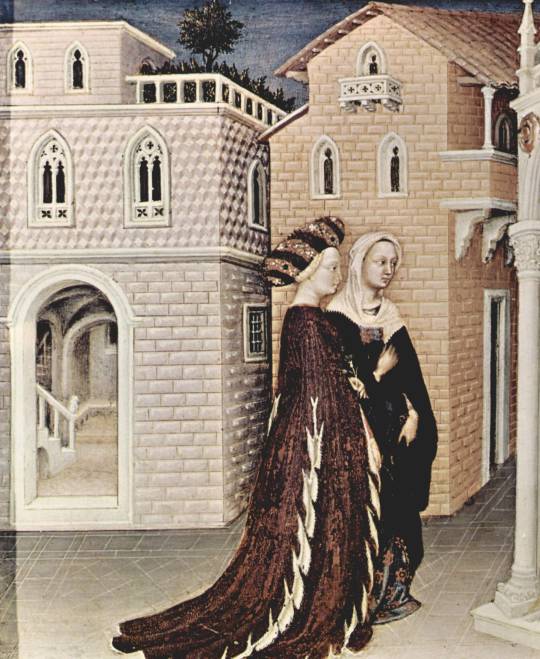



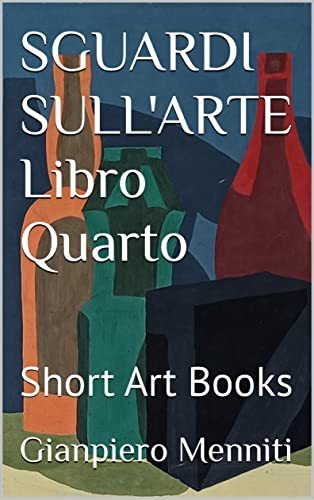

Da: SGUARDI SULL'ARTE LIBRO QUARTO - di Gianpiero Menniti
EPIFANIA, APPARIZIONE ED ECLISSI DI UN MONDO
Inutile perdersi in eccessi di parole: lo stile Gotico, il Gotico Internazionale in modo più evidente, evoca una rilettura del mondo.
Non il mondo del “sacro” in particolare, ma una realtà narrata, interpretata, anelata.
Coincide con il “sacro” che si rivela: “ἐπιϕαίνομαι” (epifainomai) è l’apparire, la manifestazione di chi sta al di sopra, il divino.
Dunque, un segno dell’incarnazione, un segno di verità tangibile, il reale visibile.
Eppure, il dipinto su tavola di Gentile da Fabriano (1370 -1427), “L’adorazione dei Magi”, 1423, conservato alla Galleria degli Uffizi di Firenze, riflette una visione ansiosa di saldare la tradizione dell’evento religioso con la dimensione eterea, leggera, preziosa del commento pittorico prevalente in quell’epoca.
Nonostante questo, nei riquadri della predella, le figure, pur mantenendo i tipici tratti eleganti, adagiati e non formati nella luce e nella vividezza dei colori, echeggiano gli impercettibili segni del cambiamento: di lì a poco, tra il 1424 e il 1428, Masolino e Masaccio faranno strame dell’arte trecentesca impegnandosi in un “duello” di stili negli affreschi della Cappella Brancacci.
Lo stile “plastico” di Masaccio prevale.
Non subito.
La rottura dell’illusione è cocente, gridata, quasi feroce nel suo apparire, epifania anch’essa di una cristianità rivelata nell’atto del vivere autentico e non più nell’idillio.
Gentile, il più raffinato tra gli artisti del suo tempo, da "artista" avverte, sente quel suono lontano che si avvicina.
Lo descrive sulla punta del pennello.
Non può abbandonare l’incanto.
Estremo, ultimo appello alla fiaba.
Prima di un umanesimo che nasce già tragico.
14 notes
·
View notes
Text
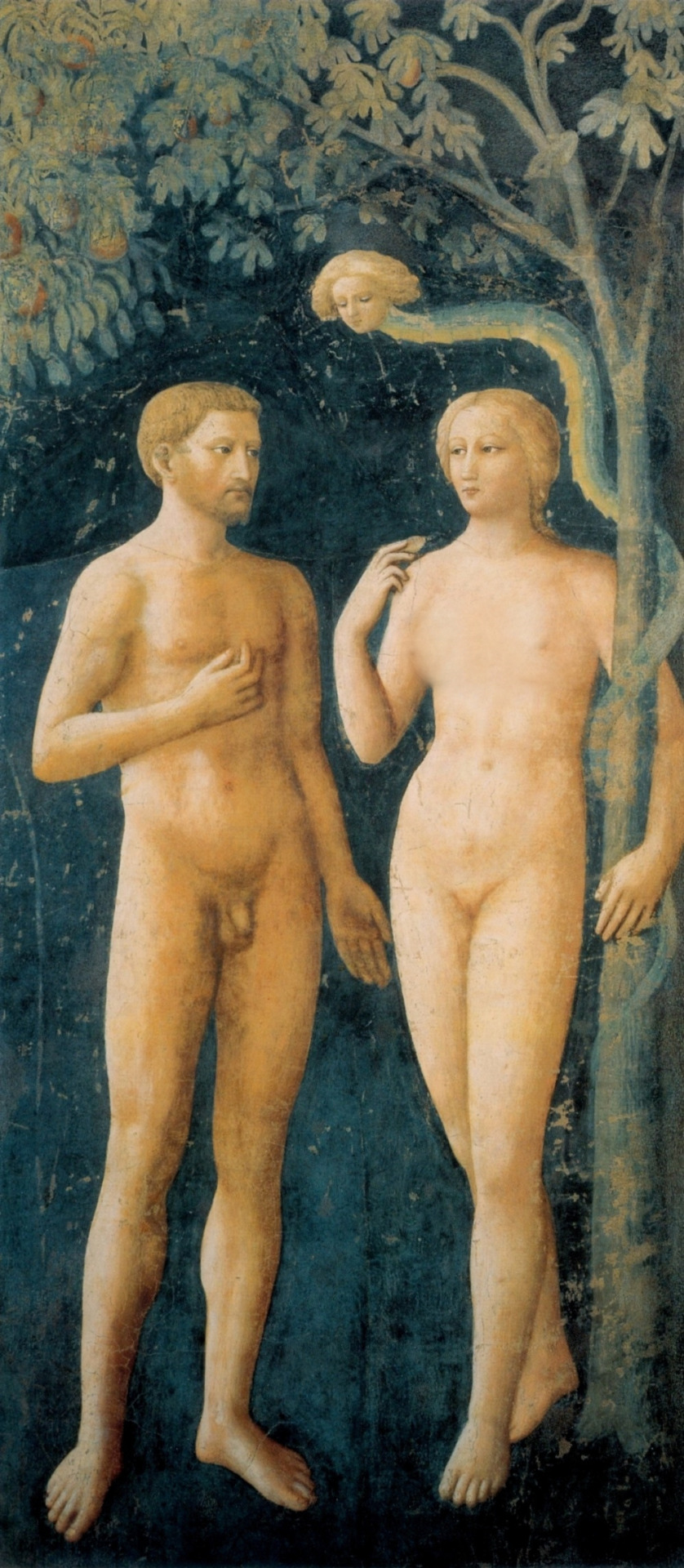
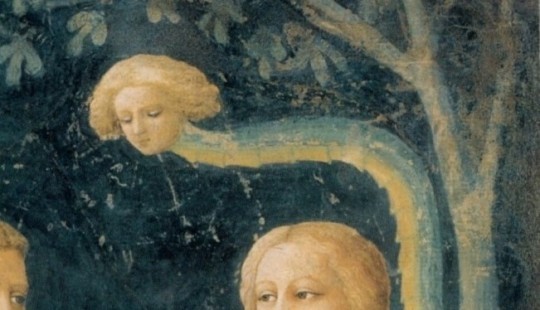
Masolino da Panicale, The Temptation of Adam and Eve, Capella dei Brancacci (Brancacci Chapel), Santa Maria del Carmine, Firenze, 1425-27(?)
(a little bit of blonde Crowley😄)
#good omens#goodomens#crowley#anthony j crowley#snake crowley#italian art#reneissance#art#art history
28 notes
·
View notes
Text

Leonard Whiting and Olivia Hussey in Romeo and Juliet (Franco Zeffirelli, 1968)
Cast: Leonard Whiting, Olivia Hussey, John McEnery, Milo O'Shea, Pat Haywood, Robert Stephens, Michael York, Bruce Robinson. Screenplay: Franco Brusati, Masolino D'Amico, Franco Zeffirelli, based on a play by William Shakespeare. Cinematography: Pasqualino De Santis. Production design: Lorenzo Mongiardino. Film editing: Reginald Mills. Music: Nino Rota.
This is prime Zeffirelli, when he was attracting attention for not only movies but also operas with lavish sets and traditional costumes. His style has fallen out of favor now: Both moviegoers and opera lovers now want a fresh point of view on the classics. His 1998 production of La Traviata at the Metropolitan Opera was replaced in 2011 by the minimalist Willy Decker production whose action took place on a large clock face. And in 1996, Baz Luhrmann's movie Romeo + Juliet set the story of the star-crossed lovers in the fictional, gang warfare-riddled town of Verona Beach. But Zeffirelli's 1968 version of Romeo and Juliet remains fresh, largely because it is one of the few Shakespeare plays that lend themselves to movies: It has as much passionate romance and lively action as a moviegoer could want, and if you throw in a little discreet nudity, as Zeffirelli did, what's not to like?* Well, it could be a little more respectful to Shakespeare's verse, large chunks of which are cut for the sake of lively, breathtaking swordfights. Gone, for example, is Juliet's rapturous soliloquy in Act III, Scene II:
Come, gentle night, come, loving black-brow'd night, Give me my Romeo, and, when he shall die, Take him and cut him out in little stars, And he will make the face of heaven so fine That all the world will be in love with night And pay no worship to the garish sun.
And when Juliet is preparing to drink the potion that will simulate death, we get none of her terrors of being sealed in the Capulet tomb. Zeffirelli's version is a safe compromise between the too-reverent George Cukor production for MGM in 1936, and Luhrmann's souped up modern version, but Leonard Whiting and Olivia Hussey are preferable to the aging Norma Shearer and Leslie Howard, and they handle the verse better than Leonardo DiCaprio and Claire Danes did in Luhrmann's film. One thing the Zeffirelli film also has going for it is Nino Rota's score, which grew over-familiar when it became a best-selling LP but is still evocative today. And there are some good actors in the cast, including Michael York's Tybalt, Pat Heywood's Nurse, and Milo O'Shea's Friar Lawrence, not to mention Laurence Olivier's uncredited narrator. (Olivier also supplied the voice for the Italian actor playing Montague.)
*Whiting and Hussey later found something not to like about the nudity, and filed suit in 2022, saying that they were underage at the time of the filming and had been tricked by Zeffirelli into the nude scene. The suit was dismissed, but they have said they would appeal the decision.
10 notes
·
View notes
Text
Capella Branccaci
In Florence on a more laid-back day, we visited the Capella Branccaci. This chapel had artwork from artists, such as Masaccio, Masolino and of course Brancacci. The paintings had a very pale and pastel color to them while we were there it seemed like they were in construction and there were lots of barriers with plastic and other forms of construction built up. I believe they might have been reconstructing different areas of the Capella. After exiting the Capella we had a small break, and I was touched to learn that our guide Francesco’s grandmother actually lives right in front of the chapel, and he planed to go visit her on our hour break.

It was so nice to see that for Francesco. This is home for him and he has loved ones nearby that he can visit and pass time with. But for us it was a whole New World as we walk the streets as tourists. While on our break, we ran into what seemed like a big flea market. The moment was cool to see everyone shopping and enjoying the Center Square. There was a nice Homie feel that surrounded the town of the Capella of Branccaci.









#italytravel#italytrip#florence italy#capella#italy#studyabroad#italy art#chapel#travel#discover#adventure
3 notes
·
View notes
Text
Riapertura Cappella Brancacci: affreschi completamente visibili dopo restauro
Giovedì 16 maggio riapre al pubblico la Cappella Brancacci dopo due anni, priva dei ponteggi del cantiere che ha permesso agli addetti ai lavori di effettuare prima le indagini diagnostiche e poi eseguire il delicato restauro. Gli affreschi che Felice Brancacci, tornato dalla spedizione fatta presso il Soldano del Cairo, volle commissionare nel 1424 a Masolino e Masaccio per decorare la sua…

View On WordPress
#antonietta bandelloni#art#artblogger#arte#artinfluencer#bellezza#capolavoro#english#Firenze#inartwetrust#masterpiece#Michelangelo Buonarroti#restauro#rinascimento
5 notes
·
View notes
Text
archangel gabsama...

inspired by The Archangel Gabriel, c. 1430 by Masolino da Panicale
#fab-el#heavenlyhelly#heavenlyhelly fanart#shocking famelposting by ovenyoven#gab sama#heveheli#self-indulgent doodle from jan which a fautafriend has been breathing down my neck to finish. here we are nine months later#heavenly helly
0 notes
Link
0 notes
Text

Empoli 1424. Masolino e gli albori del Rinascimento
Una grande mostra per ricordare il seicentesimo anniversario della realizzazione a Empoli del ciclo di affreschi della storia della vera Croce di Masolino da Panicale
0 notes
Link
Musica elettronica, a Panicale la seconda tappa di Hidden Hill Nella serata del 9 Settembre 2023, durante la celebrazione della storica Festa dell’Uva, è previsto il ritorno dell'evento HIDDEN•HILL in una straordi...
0 notes